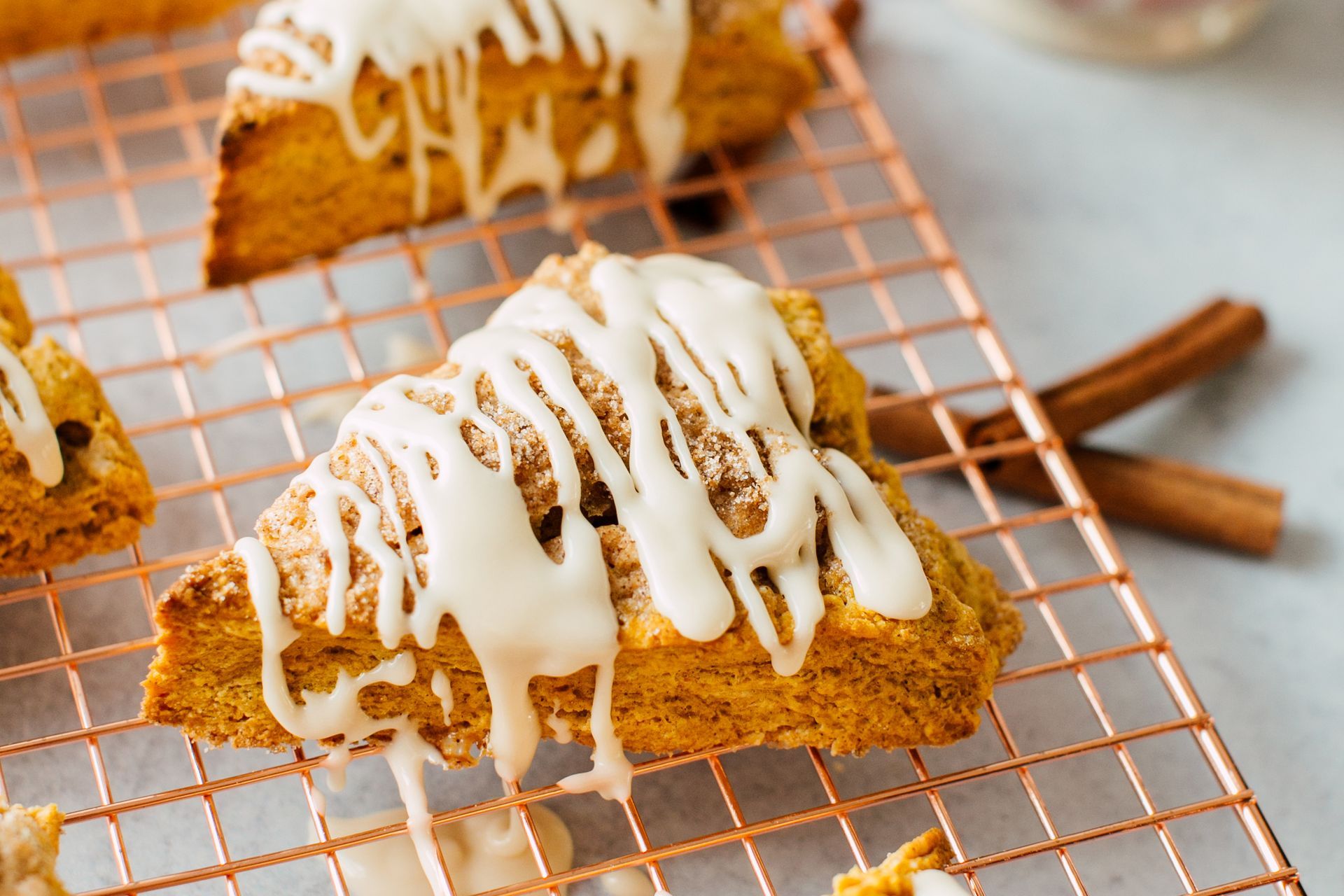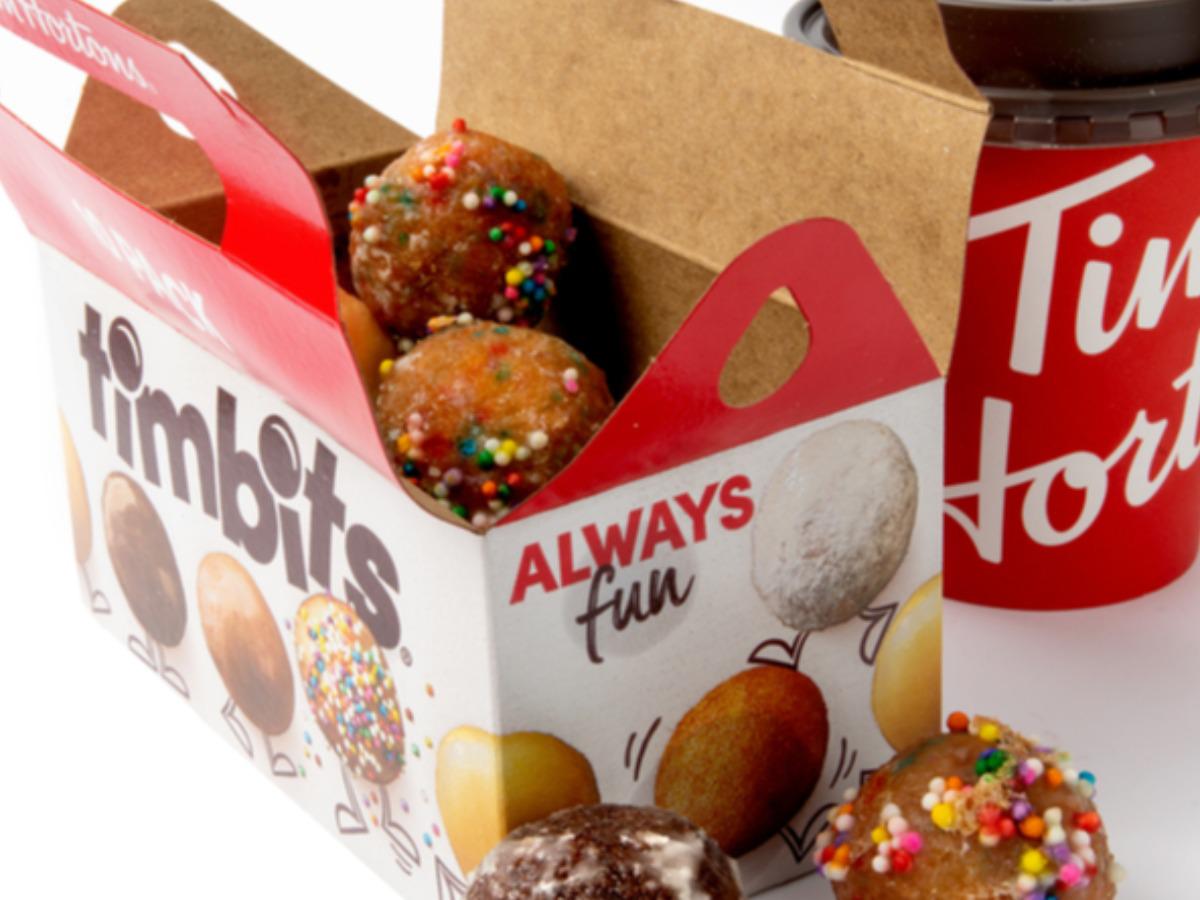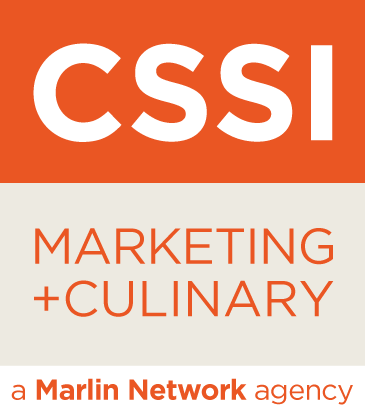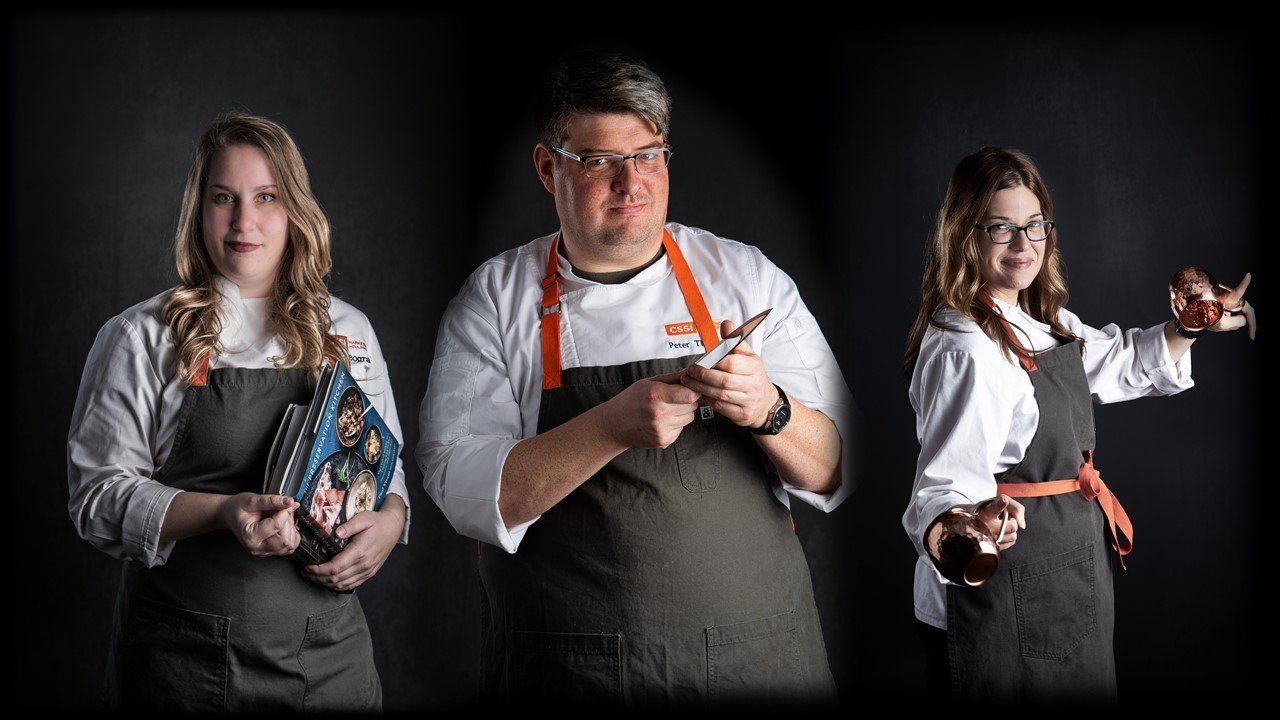Roundtable: Is a Ghost Kitchen the Next Move for Your Brand?
CSSI Roundtable – March 24, 2021
As industry insiders, we have known about ghost kitchens since 2019. However, the concept launched to center stage in 2020, as it provided solutions for the pandemic's challenges. Now, as we move forward into this new food landscape, ghost kitchens are proving to be a resilient model that will be ever-present into the future. But what is a ghost kitchen, exactly? And could a ghost kitchen or virtual brand be the right strategy for your operation?
What is a ghost kitchen?
The terms ghost kitchen and virtual brand often are used interchangeably. For consumers, these concepts only exist in a virtual world. They live on digital platforms without formal dining areas, operating exclusively through to-go and delivery. The ghost kitchen (aka dark/cloud/virtual/shadow kitchen) is the physical space. The virtual restaurant (or brand) is what consumers interact with and where they place their order. Sometimes it's an existing restaurant; sometimes, it's an entirely new concept.1
The language is still evolving, but for the sake of clarity in this article, we'll be using the terms "ghost kitchen" and "virtual brand."
We asked those closest to the new concept within our organization about ghost kitchens and what they have seen within the new model. Jessica Bograd, Director of Culinary R&D, Peter Thornhill, Associate Director of Culinary R&D, and Rachel Royster, Senior Strategic Planner, sat down for a virtual roundtable discussion on this emerging concept in foodservice. Check out some highlights from the conversation below.
Question: Why would a chain or operator choose to open a ghost kitchen?
Rachel Royster:
Someone might pursue a ghost kitchen if they were "looking into expanding their reach into suburban markets where they don't currently have operations. Or a ghost kitchen can allow an operator to have a centralized operation that can expand out into rural areas."
Peter Thornhill: Ghost kitchens also "give brands the chance to seed an idea in a new market without the overhead cost. Market testing using a ghost kitchen can inform expansion into a new area at a lower risk. Ghost kitchens, in some cases, also put unutilized kitchen spaces back into production."
Jessica Bograd: "A ghost kitchen can reach more masses and expand daypart offerings for existing brands. Dog Haus, for example, has created multiple virtual brands using the existing Dog Haus pantry. Through these new brands, menu concepts and dayparts are created that don't exist on the standard menu. If your goal is to diversify or expand your brand, ghost kitchens would be a good solution."
Q: How might an independent or chain operator use a ghost kitchen to expand into a new market with fewer overhead costs?
PT: "When you establish a ghost kitchen, there are huge cost savings. Investments in signage, drive-thrus, zoning, none of that is required. The financial risk of expanding a brand through ghost kitchens is much lower."
JB:
"That barrier to entry is much lower, too, giving the space for anybody to gain access into the market. It opens the space for people who don't have the start-up capital to open brick-and-mortar locations. Dog Haus has created new branding unaffiliated from their original brand with the same menu items."
Meaning they didn't have to invest in the entire process of sourcing both ingredients and production space.
"We've seen a rise in non-restaurant entities pursuing new restaurant concepts through ghost kitchens. There is a rise of celebrity-sponsored ghost kitchens that can be pushed out nationally without the risk and start-up capital expected when opening a brick-and-mortar."
Q: How important is it for existing brands to create associated offshoots of their established brand?
RR: "Learning that Pasqually's Pizza was actually Chuck E. Cheese… Chuck E. Cheese is a place I probably wouldn't have ordered from. That brand affiliation may have discouraged customers like me from ordering from Pasqually's. We have an established assumption about that brand that could potentially deter us from exploring the menu. So, in some cases, losing the affiliation could serve to benefit the operator."
PT: "The occasion to go to Chuck E. Cheese is so specific. You wouldn't just go on a Tuesday. If you have a virtual brand with no ties to Chuck E. Cheese, now, someone like me with no kids, I inadvertently have an excuse to order their pizza. They have expanded their market just by the nature of excluding those lurking biases within their brand."
"Losing the affiliation helps the operator get out of their 'designated space,' overcoming those preconceived biases and expanding the range of customers within the existing market."
JB:
In the case of Dog Haus, "losing the affiliation, essentially, lets them create their own parent company, like Yum! is the parent company to Taco Bell and KFC. It creates the ability for operators to become a powerhouse where they couldn't before without the investors or start-up capital."
Q: What's the flip side? What if the brand maintains its affiliation without new branding? When should they make it clear that the brand belongs to an existing concept?
PT:
"I ordered from Bad-Ass Breakfast Burritos a few weeks ago, and the packaging had nothing that signaled its affiliation with Dog Haus. The only way I found out about that affiliation was from an article I read."
Dog Haus explicitly sought to create concepts separate from their existing menu, creating their own identity.
JB:
In many scenarios, the brand affiliation "can only be found if explicitly sought out. The average consumer probably wouldn't know about the affiliation and, realistically, probably doesn't care about that type of information."
RR: "I've read lots of articles about ghost kitchens, but often there is no mention of those parent companies. So, the average consumer probably wouldn't know without reading an industry newsletter. There usually aren't a lot of pointers to the original brand on these newly branded ghost kitchens."
PT: "On the flip side, there are several virtual brands that are fully embracing their heritage. Applebee's, for example, created Neighborhood Wings, playing off their 'Eatin' Good in the Neighborhood' tagline. There is definitely some desire amongst some brands to tie themselves to their original brick-and-mortar entities."
Q: So, what would you say is the main benefit of maintaining their existing branding?
PT: "What I have seen most is them trying to focus on whatever it is they think they do best. Like Village Inn creating Village Bowls. The focus is on its breakfast bowls. So, it's a to-go friendly iteration of their breakfast offerings."
Q: We have seen several similar menu offerings from ghost kitchens and virtual brands, like pizza and wings. Are these menus looking to capitalize on what's trending?
RR: "A lot of people are looking for those craveable comfort foods, so that may be the reason we are seeing a lot of wings and pizza. As the weather warms up, I expect to see more salads and bowls"
reflecting the consumer demand.
JB: "Another part of those menu choices is because those foods travel well. However, I also expect to see more salads and bowls as the weather warms up and as the market becomes saturated with the same menu offerings."
PT: "Whether there's a need or not, most of these operators we have looked at have been serving pizza and wings, and the market is definitely saturated at this point. As the year progresses, they are going to have to start diversifying their offerings."
RR: "Craveable indulgence is the current trend, but things are going to shift once the market becomes saturated."
JB: "Bar Louie is testing a new concept called Macs & Stacks focusing on macaroni and cheese. So, they're getting away from the handhelds and finger foods, shifting to a heartier dish that still falls in the indulgence space."
Q: Noting foods that travel well: Are there any new packaging methods you have seen being implemented by ghost kitchens? If not, what types of packaging could benefit an operator whose sole function is to-go and delivery offerings? How significant is that investment?
JB: "Something we saw immediately after the start of COVID in the packaging space was the seal. Consumers wanted to know that their food wasn't a point of contact in contracting COVID."
"Packaging can relate to everybody, whether you are an existing restaurant or when operating a ghost kitchen. Packaging is imperative for ghost kitchens because it is their only method of delivery. They must account for the transition from their space to the driver to the home and the time in-between. They need to figure out what type of packaging works best for their food."
It is the responsibility of the ghost kitchen to innovate around these packaging and transportation challenges. Investing in new packaging overall will be time and money well spent.
Packaging can provide a unique opportunity for brand exposure, as well. "New Star, an independent Chinese restaurant I order from, has invested in insulated, reusable bags that are branded with their logos. I have an incentive to hold on to that bag. And it sits in my pantry constantly signaling to me, the consumer, that restaurant and the care they take in their packaging. If they offered a discount on my next order for returning the bag, I would order again immediately."
Q: Do ghost kitchens provide an opportunity for an LTO strategy? What about opportunities to use different kinds of equipment?
RR: "We've seen some of that, but it's not the most prevalent. Wow Bao kind of did the reverse of that. They were giving restaurants the ability to make their bao back-of-house. Based on that relationship, for example, if I were a pizza chain, I could also sell Wow Bao. This sort of program could diversify my menu while expanding the market of the secondary operator.”
JB: "Red Robin is an interesting example. They partnered with Donatos, who formatted some of their kitchens to have a pizza oven so that they could expand as a ghost kitchen. That type of synergetic partnership between brands has happened, but the final goal's question would have to be at the forefront of that initiative. I don't see an operator adding the expense of sourcing a ghost kitchen for an LTO because it doesn't fit into the standard LTO strategy. They would need a bigger picture investment."
Ultimately, we're not far enough into the evolution of ghost kitchens to see these types of strategies tested, but there is the potential for this type of leveraged approach to expand operations to play out in real-time.
Q: If an operator is looking to test a new item or menu platform, how would they use a ghost kitchen in their strategy?
RR: "It makes sense to use a ghost kitchen because you could target certain locations. Most ghost kitchens are regional or in particular areas. If you were a regional operator with access to a ghost kitchen, you could test a product within the region to get a pulse on that area. And it would allow you to test the potential success of an expansion. It creates a lower barrier for an item to make it into a market test. All restaurants test, but ghost kitchens give the opportunity to test new markets and regions.”
JB: "I think there's a big opportunity in regional testing. Say you're a Southeastern brand wanting to bring in California flavors. You could launch a local ghost kitchen with California flavors at a low risk to see how the consumers react. You could attach a survey to it, too, to gain data on the decision to include the new flavor platform in your brand."
"The question goes back to whether or not to affiliate with an existing brand. That affiliation piece may be necessary to provide the correct feedback to the brand to inform whether or not the initiative would be successful."
RR: "That ties back into not promoting the brand recognition and deciding whether it's important for the initiative."
Q: How would an operator capture the type of data needed to inform those decisions beyond anecdotal evidence?
More prominent brands likely have a team dedicated to consumer insights. For those smaller or less established brands, something as simple as a quick customer survey could provide significant insights if that brand has no strategy team established.
Q: Is there anything else you think our readers need to know about starting a ghost kitchen?
RR: "The most important thing when launching a ghost kitchen is creating a very streamlined, limited menu. Overall, the success we're seeing is from small, tidy menus without the breadth of the brick-and-mortar operations."
CSSI can help your brand with menu strategy, restaurant optimization and even designing a menu that best suits your initiatives. For more information on our process, click here.
1 Roaming Hunger, “Guide to Ghost Kitchens (2020): All You Need to Know”, November 24, 2020.
Madison Parsons
Research & Development Chef

March 1st, 2023 We’re thrilled to introduce the newest addition to our culinary family: Chef Steve Madonna. Formally trained in both Italy and the United States, as well as having worked for Wolfgang Puck, Chef Steve brings an extensive set of connections and culinary knowledge to our already stacked chef roster. Featured in this month’s issue is one of Chef Steve’s favorite recipes for making memories at home with your loved ones.

October 19, 2022 Pumpkin pie is a nostalgic menu item and my personal favorite when it comes to fall and winter menus, as it goes hand in hand with a traditional Thanksgiving or Christmas feast. We elevate the nostalgia by turning this must-have holiday dish into a clarified cocktail that leaves your taste buds as curious as your eyes. We get adventurous as we replace expected visual elements with an ice-cold glass of clarified liquors infused with pumpkin pie. This cocktail defies all visual expectations, while leaving your sense of smell and taste immersed in a seasonally nostalgic experience.

October 19, 2022 Canada is well known for many things. Hockey, snow, maple syrup, and a few other stereotypical but somewhat accurate concepts may immediately come to mind. What you may not know, though, is how invested we are in the snacks that we consume. Compared to the U.S., sure, we are no match for the quantity and variety offered in the land of the free, home of the snacks. However, what we know in our hearts is that Canada has a long-standing, tried-and-true, flawed, yet beloved top-notch snack game. I’m talking about comfort foods that have become so integrated and so established that they are classified as cult-favourites—and no, I did not spell favourites incorrectly. You are about to see a lot more of the letter “U” in this article. Sorry! The great Canadian snack game is easy enough to understand. You think of a flavour and either slap it on a potato or pair it with chocolate. Snacking has always been a huge part of Canadian food culture, but it is only going up from here. To put it lightly, the past few years have been tough on everyone around the world, and Canadians have chosen to increase their spending on snacks by 67% as an indulgence or, personally, as a coping mechanism. In no way, shape, or form am I claiming to be a culinary expert somehow employed in the field of Finance, but I have eaten a lot in my life and right now, I’m the best and/or only Canadian guide you’ve got. Let’s get into the details:



